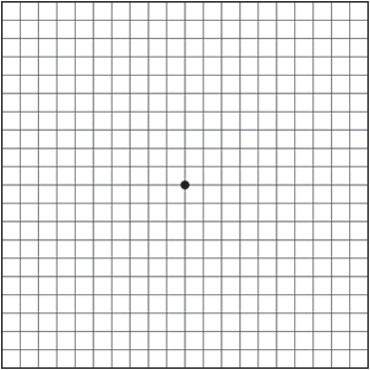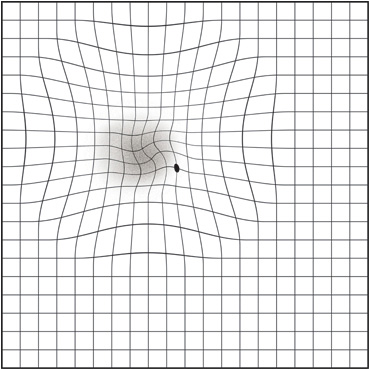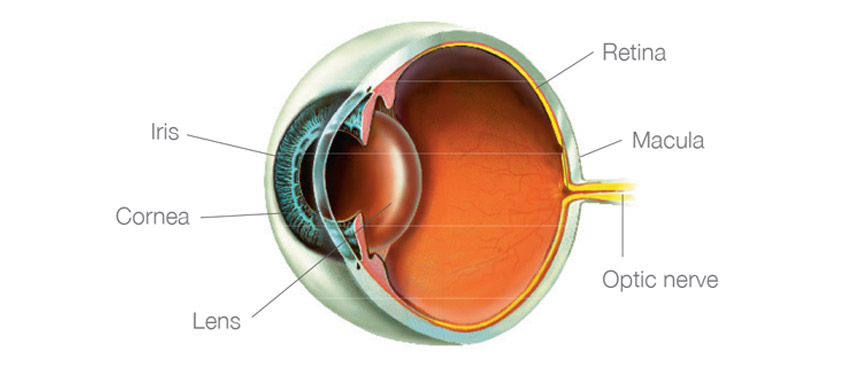Macular degeneration can affect one or both eyes and typically causes problems with your central vision. You may notice that reading and close work become difficult, and there may be blank areas or a grey or black spot in the centre of your vision.
Your peripheral or ‘side’ vision will usually remain unaffected if you suffer from macular degeneration. This means that even people with severe macular degeneration, whose central vision is badly affected, can usually still get about and look after themselves quite well.
The symptoms are quite similar to those of a macular hole. Still, an eye specialist will be able to give you an accurate diagnosis.
There are two types of macular degeneration – wet and dry.
Dry AMD is the most common form of macular degeneration and affects around 85 to 90% of people with AMD. Vision loss is usually gradual and occasionally severe. However, it can change into wet AMD.
Wet AMD is the more aggressive form of macular degeneration and can lead to rapid and severe vision loss. However, it only occurs in 10 to 15% of AMD sufferers.
In wet AMD, abnormal blood vessels grow underneath the macula. These can leak fluid and blood, causing permanent damage to the retina. Wet AMD symptoms include a reduction of central vision and distortion of vision, which can make straight lines (such as window frames, telegraph poles or lines of text) look bent or wavy.
The Amsler Grid is a simple test that will help you determine if your vision is distorted in this way. You can test yourself here
The image below shows an Amsler Grid with straight lines as seen by a normal-sighted person.

The image below shows an Amsler Grid with a distorted grid pattern. This includes bent lines, irregular box shapes, and grey shaded areas, as seen by a person with macular degeneration.













